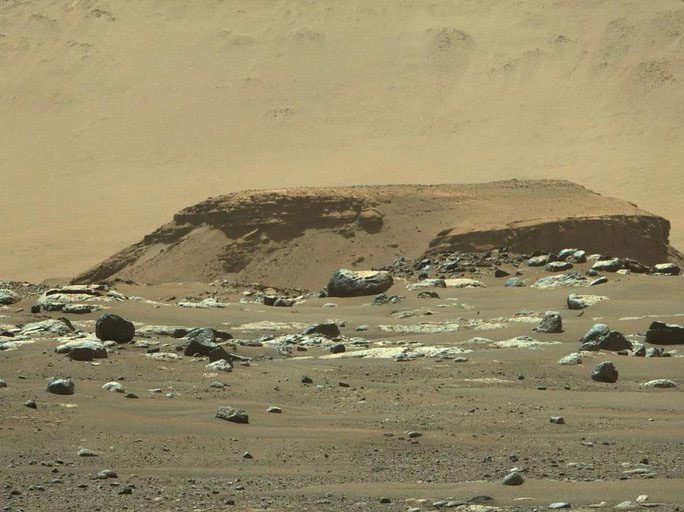A new artificial brain has been revealed by the SETI Institute, Johns Hopkins University, and the University of Oxford, boasting capabilities to filter signs of extraterrestrial life that surpass those of humans and all current supporting devices.
According to Space, scientists from the Search for Extraterrestrial Intelligence Institute (SETI – USA), led by Dr. Kim Warren-Rhodes, began their research by mapping sparse life forms in a place regarded as a “world beyond Earth”, specifically the Salar de Pajonales, located on the border of the Altiplano plateau and the Atacama Desert in Chile.

Landscape of an area with potential signs of extraterrestrial life on Mars – (Photo: Perseverance/NASA).
They later collaborated with Dr. Michael Philips from the Applied Physics Laboratory at Johns Hopkins University and researcher Freddie Kalaitzis from the University of Oxford to train a specialized AI.
This AI was taught to recognize “Mars-like” terrains of the Salar de Pajonales, discovering patterns and rules common to various landscapes, thus identifying biological signatures.
By combining statistical ecology with this AI, the scientists were able to identify up to 87.5% of biological signatures in a time when older systems could only detect 10%.
The AI also has the capability to narrow its focus and boost the accuracy of its searches to 97%.
According to Dr. Warren-Rhodes, the combination of the power of statistical ecology with a self-learning machine has enhanced the exploration and prediction of patterns and laws of nature, effectively turning Earth’s harsh landscapes into a guide for searching for biological signatures in similar locations on Mars or other planets.
For instance, it can assist Perseverance, NASA’s life-hunting robot currently operating in the Mars-like terrain of Jezero Crater.
While Perseverance cannot survey every square centimeter of the vast land believed to be an ancient delta, the AI from SETI – Johns Hopkins – Oxford will help it select locations with the highest probability of finding life.
The team continues to train their AI and is using data from the HIRISE camera aboard NASA’s Mars Reconnaissance Orbiter to test it further. The capabilities of the AI are continually improving.
They plan to map other extreme environments on Earth, such as hot springs, permafrost, or dry valleys, to train this intelligent brain.


















































